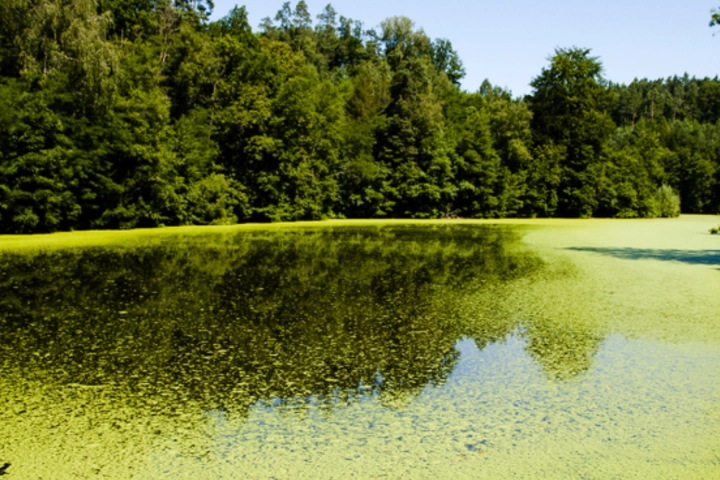
In the unpredictable waters of Florida, too much of a good thing can quickly turn into something troubling. When it comes to algae, small amounts are almost essential to any body of water; however, when these blooms start to take over the surface of your lake, they can wreak havoc on the surrounding ecosystem. Therefore, it’s essential to have algae professionally removed and understand how to prevent it from invading again.
Causes of Algae Buildup in Lakes
There are multiple factors that contribute to excessive algae growth, including temperature, light exposure, and pH levels; however, the most preventable catalysts of algae buildup include:
-
Fertilizer and other chemicals
When lakes absorb fertilizers and other lawn care chemicals, it can quickly pollute the ecosystem underwater. These chemicals build up and cause excess nutrients to create a feeding frenzy for growing algae, which you can prevent by carefully avoiding the edge of your lake when moving grass or tending your lawn with chemicals.
-
Lack of movement
Without waves, wakes, and general movement, lakes become a prime spot for algae to breed. And, without a steady stream of oxygenated water, lakes form sedentary deposits that promote phosphorus, an essential component of algae growth.
-
Septic tank problems
You must have your septic tank regularly inspected to prevent leaks or failures from leaching waste into your lake and spreading excess nutrients for algae growth. Similarly, having it pumped every few years is a great way to help prevent blockage from overflowing into your nearby body of water.
Dangers of Algae Buildup in Lakes
Beautiful lakes covered in blue-green blankets of algae are not only unsightly, but also highly dangerous to the underwater and surrounding environments. Here are some of the most common challenges associated with algae blooms.
-
Strong odors
Algae buildup often creates a foul stench that most people associate with dirty freshwater, which can decrease the value of the outdoor environment you’ve tried to create for your property.
-
Lack of oxygen
When algae takes over the surface of your lake, it depletes the available oxygen below the surface, which cuts off necessary nutrients for fish, plants, and other underwater species.
-
Potential toxicity
-Devastating to fish and underwater life, algae is also potentially dangerous to humans. Overtime, the algae in your lake can become toxic and impossible to control on your own.
Expert Algae Control in Central Florida
Algae removal and control is specific to each body of water, which is why the team at Sorko Services supplies personalized algae solutions. Once we remove the dead algae from both the visible surface and the intricate depths of your lake, we can develop a treatment system to prevent future growth from getting out of hand. To start creating a water maintenance plan unique to your budget and body of water, call us today at 407-878-4492.
Why Does My Lake Have so Much Algae in Central Florida?
Serving Greater Orlando, Sanford and Kissimmee
Sanford | Orlando | Poinciana | Ocala | St Cloud | Winter Garden | Clermont | DeLand | Winter Springs | New Smyrna Beach | Winter Park
Orange County | Seminole County | Lake County | Osceola County | Volusia County | Polk County | Marion County | Brevard County
Home » Why Does My Lake Have so Much Algae?
